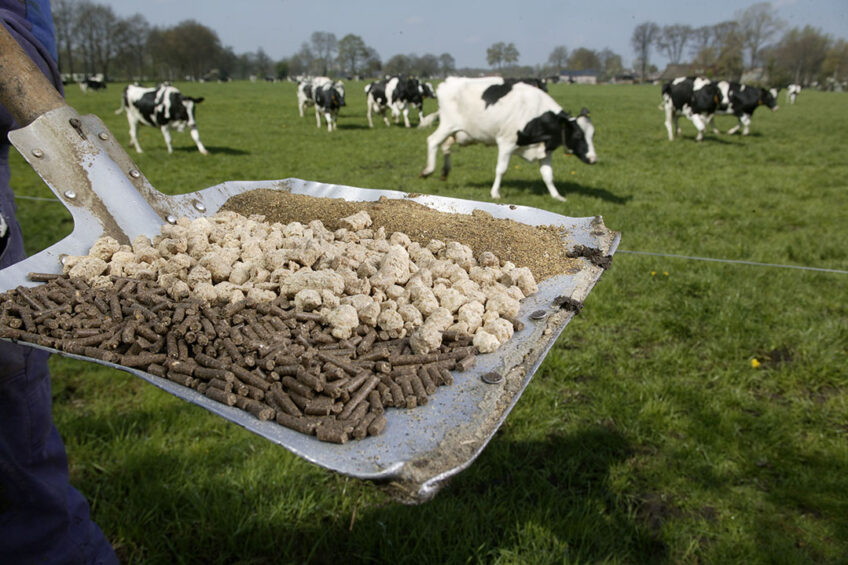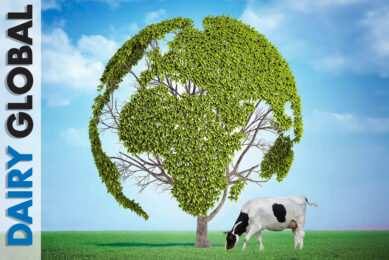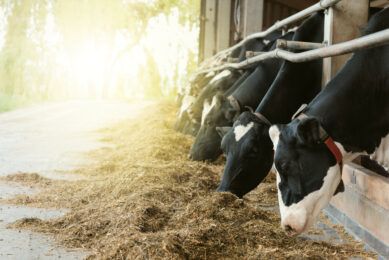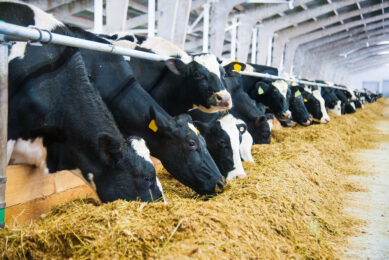World produces more cattle feed in 2018

The global total compound feed production reach 1.103 billion metric tonnes (MT) in 2018. Over 237 million MT of this volume was cattle feed.
This is according to data from the Alltech Global Feed Survey. The 8th edition of the annual survey includes data from 144 countries and nearly 29,605 feed mills. In 2018, 1.103 billion MT of total compound feed (all species) was produced, This is an increase over the 1.07 billion MT produced in 2017. Also the total cattle feed production (dairy, beef and calves) increased from 224.4 million MT in 2017 to 237.8 million MT in 2018. Since 2015, the ruminant feed production on a global level has increased every year (Figure 1).
Trends in dairy cattle feed
If we look at dairy and beef feed production, we see that in 2018 this volume reached 213.3 million MT (Figure 2). In 2017, dairy was one of the few sectors that saw growth across all regions. A year later, in 2018, the global production of dairy feed grew with another 3%, with little regional differences. Dairy feed production remained relatively flat in Latin America and the Middle East. There was steady growth in North America and even more in Africa and Europe. Africa’s growth was primarily due to a significant increase in both Morocco and Nigeria. Also in 2017, Africa showed more than average growth figures (+ 10%) for its dairy feed production. Europe’s shining star this year was Turkey, which saw an increase of 10% in dairy production. Of the total compound feed production of Turkey (25.5 million MT) around 27% is dairy feed. Other contributors in the region include Ireland, Russia and the UK. The growth for dairy feed in the Asia-Pacific region was mainly seen in India and Nepal.
Trends in beef cattle feed
If we look at global production volumes of animal feed for beef cows, we see a flat second year in a row, mainly due to consumer preferences. North America has always led beef feed production and continues to do so. The region therefore saw an increase of 3%, which will ensure it maintains its lead for now. Europe saw a small decline at barely 1%, mainly caused by declines in France and Lithuania. In the past, Europe has been followed by the Asia-Pacific region, but many of the countries in that region saw declines in beef feed production, including Bangladesh, Mongolia, Indonesia, Taiwan, Vietnam and Pakistan. China and Australia both saw growth, but not enough to offset the overall decline in the region. Latin America saw strong growth of about 8%, and Mexico and Argentina primarily contributed to this. As a result, the Latin American region now takes third place in beef feed production. Growth in Africa was seen in Sudan, Seychelles and Morocco. It is worth mentioning that the Middle East also produced a lot of feed for other ruminants such as sheep, goats and (racing) camels. The ‘other ruminant’ feed in the Middle East is 11% of the total compound feed production in this region.
The big 7 countries
The top 7 countries (the big 7) when it comes to total feed production are (Table 1):
- China
- the US
- Brazil
- Russia
- India
- Mexico
- Spain
These countries can be viewed as an indicator of the trends in agriculture. All countries showed an increase, except for Brazil, which showed a small decrease in total feed production in 2018 (68.7 million MT versus 69.9 million MT in 2017). China remains the ultimate winner with 187.9 million MT in 2018. This is 5.4% more than in 2017.
Trends in other animal species
The Alltech Global Feed Survey also looks at the trends in other animal species. 152.6 million MT layer feed and 304.6 million MT broiler feed was produced. Major growth areas for layer feed included Europe, Latin America and Asia-Pacific. Africa showed 9% growth, demonstrating an overall trend that as populations grow and become wealthier, interest in protein, particularly in palatable chicken, does as well. 293.2 million MT pig feed was produced. This is nearly 1% more than 2017. The primary producing region for pig feed is Asia-Pacific, but this was also the only region that saw a decline in pig feed production with Mongolia, Vietnam, China, New Zealand and Japan experienced decreases. 40.1 million MT aquafeed was produced. Overall, aquaculture feeds showed growth of 4% over last year. This was primarily attributed to strong increases in the Asia-Pacific and European regions. Lastly, a growing sector is the pet food market. In 2018, 26.6 million MT pet food was produced. The pet food sector saw growth of approximately 1%, primarily attributed to an increase in the Asia-Pacific region, which was offset by a decrease in the Latin American and African regions. North America and the Middle East both remained relatively flat.
Join 13,000+ subscribers
Subscribe to our newsletter to stay updated about all the need-to-know content in the dairy sector, two times a week.












